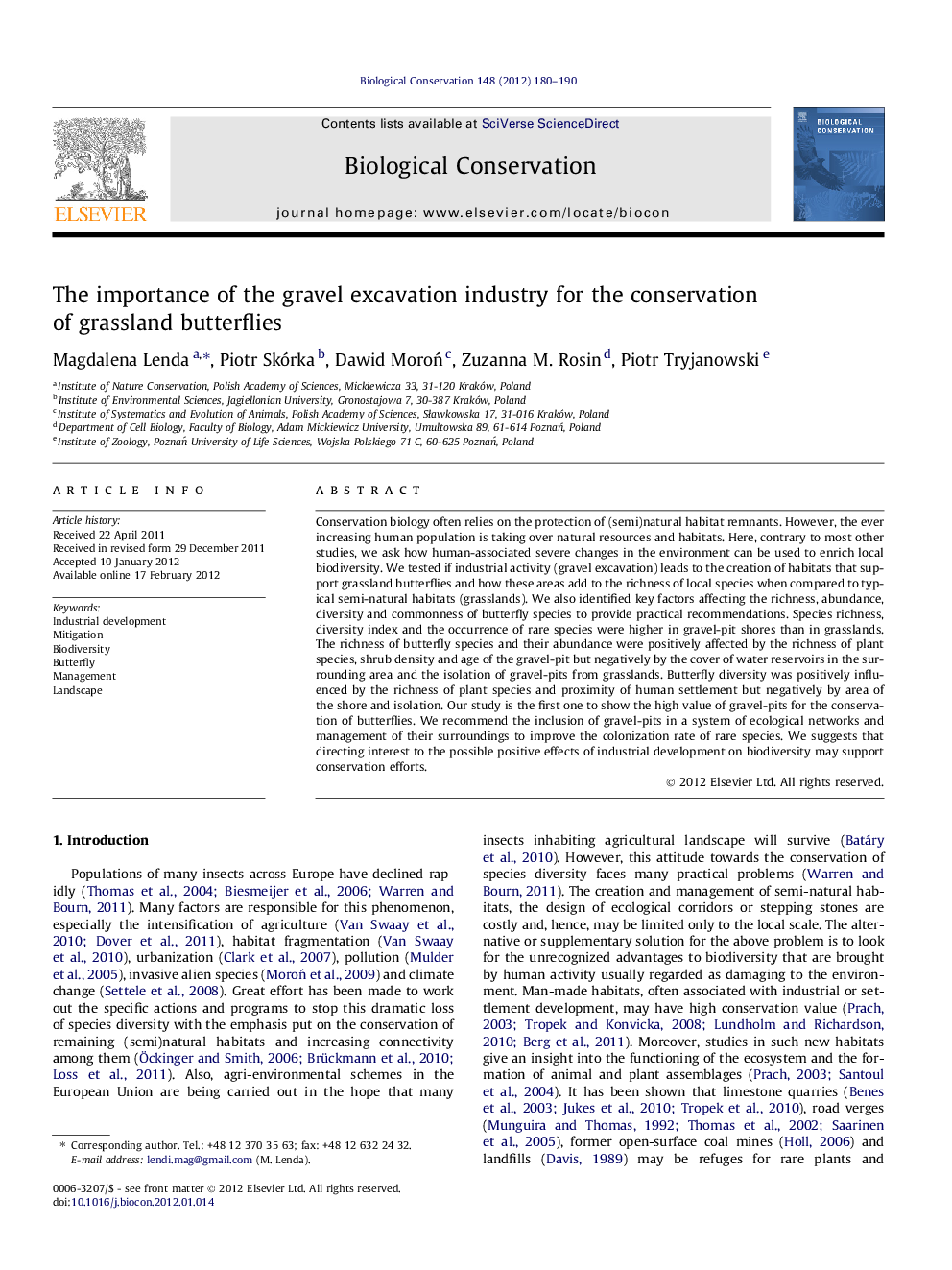| Article ID | Journal | Published Year | Pages | File Type |
|---|---|---|---|---|
| 4385506 | Biological Conservation | 2012 | 11 Pages |
Conservation biology often relies on the protection of (semi)natural habitat remnants. However, the ever increasing human population is taking over natural resources and habitats. Here, contrary to most other studies, we ask how human-associated severe changes in the environment can be used to enrich local biodiversity. We tested if industrial activity (gravel excavation) leads to the creation of habitats that support grassland butterflies and how these areas add to the richness of local species when compared to typical semi-natural habitats (grasslands). We also identified key factors affecting the richness, abundance, diversity and commonness of butterfly species to provide practical recommendations. Species richness, diversity index and the occurrence of rare species were higher in gravel-pit shores than in grasslands. The richness of butterfly species and their abundance were positively affected by the richness of plant species, shrub density and age of the gravel-pit but negatively by the cover of water reservoirs in the surrounding area and the isolation of gravel-pits from grasslands. Butterfly diversity was positively influenced by the richness of plant species and proximity of human settlement but negatively by area of the shore and isolation. Our study is the first one to show the high value of gravel-pits for the conservation of butterflies. We recommend the inclusion of gravel-pits in a system of ecological networks and management of their surroundings to improve the colonization rate of rare species. We suggests that directing interest to the possible positive effects of industrial development on biodiversity may support conservation efforts.
Graphical abstractFigure optionsDownload full-size imageDownload as PowerPoint slideHighlights► Can industrial changes in the natural environment be beneficial to biodiversity? ► The importance of gravel excavation industry for butterflies was studied. ► Species richness and diversity were higher in gravel-pit shores than in grasslands. ► Gravel-pits are important for the conservation of rare butterflies. ► Industry-related habitats may be remarkably good for biodiversity.
